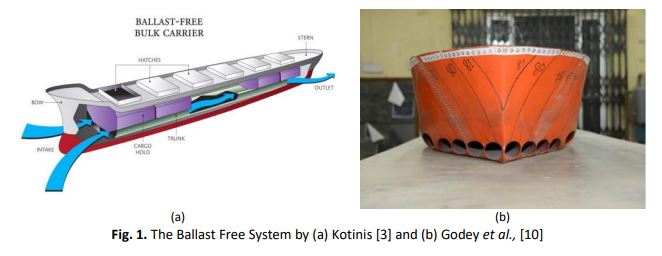Experimental of Ballast Free System with Air-Injected Pressure Bubbles in Reducing Ship Resistance
DOI:
https://doi.org/10.37934/arfmts.90.2.160175Keywords:
Ballast water free system, air-injected pressure bubbles, ship resistance, skin friction coefficientAbstract
The discharge of ballast water may introduce and transport unwanted marine organisms to the discharging area. Marine Environment Protection Committee (MEPC) of IMO consider the action as hazard due to possibility of having negative impact on the receiving ecosystems. Many researchers have investigated possible solutions for management of ballast water to minimize the risks including the ballast free system. The concept of ballast free system is to replace the conventional ballast water management system to avoid the use of costly ballast water treatment system. However, application of ballast free system has created a new issue on ship hull resistance. The objectives of this research are to determine the effect of the system on LNG ship resistance and how the air-injected pressure bubbles affecting the ship resistance and overall system performance. To achieve the objectives, experimental tests in towing tank have been carried out at Froude number of 0.17 to 0.22 and air-injection pressure of 0.5bar, 1.0bar and 1.5bar. The application of ballast free system on the LNG ship has increased the total resistance at a range of 5% to 16%. However, air-injection to the system has reduced the total resistance by 29.8% and 8.9% in average for 0.5bar and 1.0bar injection pressure respectively. For 1.5bar injection pressure, the resistance at certain speeds is slightly increased by 1.34% in average. The optimum resistance reduction occurred at Froude number of 0.19 and 0.5bar air-injection pressure. The finding of the research can be served as a guideline for the modification of ballast tank configuration in experimental and numerical mode as a comparison to real ship conditions.
Downloads
































